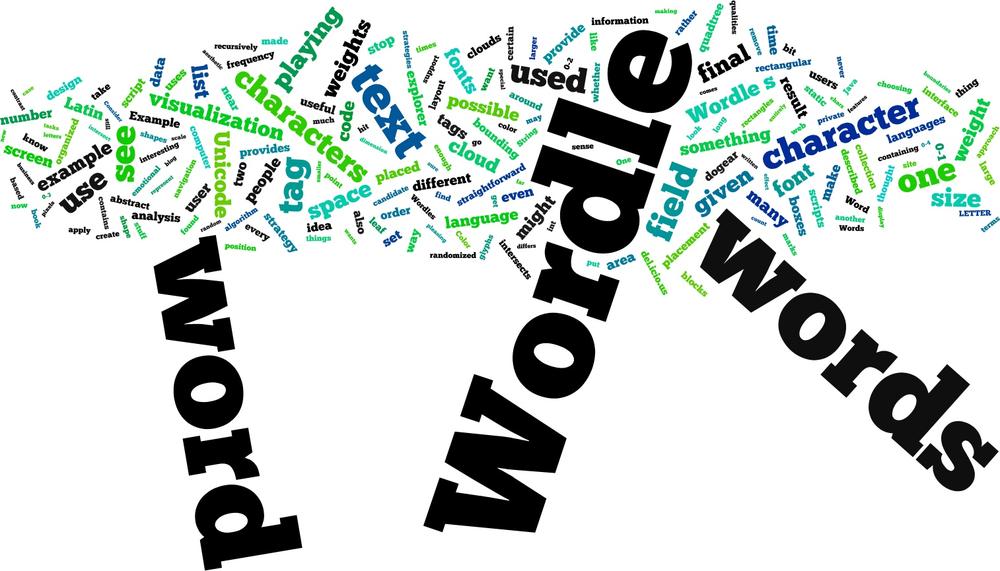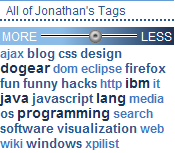Chapter 3. Wordle

Figure 3-1. A Wordle of this chapter
BY NOW, EVEN PEOPLE who have never heard of "information visualization" are familiar with the colorful word collage known as Wordle, "the gateway drug to textual analysis."[9] Like any such drug, Wordle was designed for pleasure, although its roots lie in the utilitarian tag clouds popularized by such sites as del.icio.us and Flickr.
Wordle's Origins
In 2004, my colleague Bernard Kerr and I made a social bookmarking application, which Bernard named "dogear" (Millen, Feinberg, and Kerr, 2006). Any application that lets users tag content is bound to provide a tag cloud, a vaguely rectangular collection of clickable keywords. So, when we designed dogear, we made sure to feature a prominent tag cloud on every page (see Figure 3-2).

Figure 3-2. The author's tags as they appeared in dogear
I never found tag clouds to be particularly interesting or satisfying, visually. There's not much evidence that they're all that useful for navigation or for other interaction tasks, either.[10] But when blogger Matt Jones[11] posted his del.icio.us tags as a beautiful, typographically lively image (see Figure 3-3), I was thrilled. I thought that there was no reason why a computer program couldn't create something similar. At the very least, ...
Get Beautiful Visualization now with the O’Reilly learning platform.
O’Reilly members experience books, live events, courses curated by job role, and more from O’Reilly and nearly 200 top publishers.

